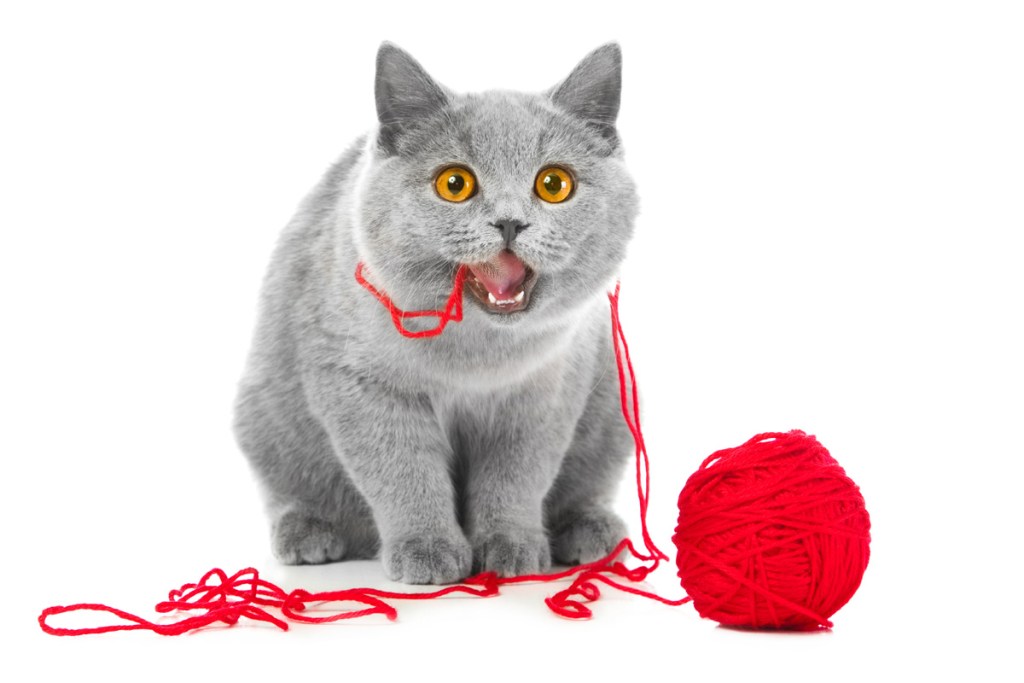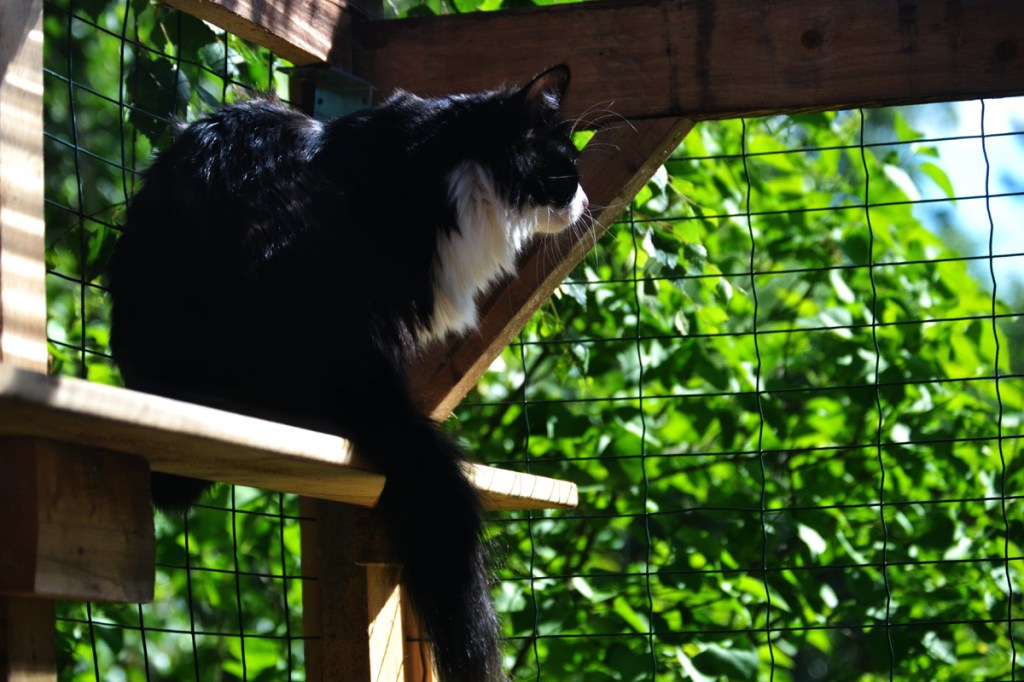Caleb, a four-year-old Siamese cat, just couldn’t seem to stop chewing and ingesting things around the house. After he’d eaten the cuffs off of a pair of pants, chewed holes in socks and T-shirts, and scarfed down some wrapping paper, his distraught owner sought help from Nicholas Dodman, an animal behaviorist at Cummings School of Veterinary Medicine, Tufts University. It turned out Caleb was suffering from feline pica syndrome, an eating disorder that causes cats to chew and swallow non-food items.
If your cat is eating everything in sight, he may be suffering from pica syndrome. A study on cats’ pica behavior published in the Journal of Feline Medicine and Surgery found that the unusual cravings were directed most commonly at shoelaces or threads followed by plastic, fabric, rubber, paper, cardboard or wood.

Why does my cat act like he’s starving?
According to Dr. Stephanie Liff, a veterinarian and advisor at SpotOn.Pet, cats are carnivores, first and foremost, so they really rely on animal products with a lot of protein, moderate fat, and minimal carbohydrates. While Liff explains that there is no ideal formula for how much and how often to feed your cat, here’s a general breakdown of what your cat should consume:
- 50 percent protein (beef, chicken, turkey, lamb, and fish)
30 percent fat (from meat, dairy, eggs, or plants)
10 percent carbohydrates (from grains, potatoes, or legumes)
There are many possible reasons your cat may be begging for food. He could be bored or have parasites. Medical reasons for food cravings include diabetes, hyperthyroidism, cancer, or aging. If your cat is always looking for food, a trip to a veterinarian is necessary to rule out health issues.
When a cat’s cravings focus on non-food items, finding the cause can be more difficult. In a WebMD article, veterinarian Arnold Plotnick, a feline specialist in New York, said that many things can cause pica, including:
Dietary deficiencies — Cats who are not getting enough vitamins, minerals, and fiber in their diets sometimes turn to non-food sources, classic feline pica syndrome behavior.
Medical problems — Feline leukemia, feline immunodeficiency virus, diabetes, or brain tumors can cause cats’ pica behavior.
Genetic predisposition — Sometimes feline pica is hereditary. Your fur baby may have been born to occasionally nosh on non-food.
Environmental factors — Your cat may simply be bored or seeking attention. He may need more mental or physical stimulation.
According to Dodman, pica is closely related to — and is sometimes an extension of — feline wool-sucking commonly seen in Oriental breeds such as Siamese and Balinese. The onset of pica can be as early as 3 months of age with some cats growing out of it by 1 to 2 years old. While it’s not unusual for young cats to chew or rip up items when playing, a pica sufferer will grind the object repeatedly before ingesting.
How do I get my cat to stop eating everything?
In addition to stopping the destruction of household items, it’s important to treat pica in cats because it can lead to a possibly deadly intestinal obstruction, warns Dodman. Taking your cat to a veterinarian to rule out an underlying health issue is the first step to controlling this eating disorder. Once your cat gets a clean bill of health,, you can work on managing the behavior. That includes making necessary dietary changes and, when possible, denying your cat access to the items he craves. Spraying the objects with a deterrent such as Grannick’s Bitter Apple may also help keep your cat from inappropriately chewing on things.
Dodman used a combination of environmental enrichment and Prozac to treat Caleb’s eating disorder. The Siamese was put on a high-fiber low-calorie diet. which allowed him to feel fuller for longer without gaining weight. Caleb’s exercise was increased daily with more time spent playing with toys and chasing a laser beam. Dodman recommended leaving treat balls filled with tasty snacks around the house and providing fish treats frozen in ice cubes to provide mental stimulation. All of this dramatically reduced Caleb’s eating non-food items in a few weeks. Within months it had stopped and the Siamese was successfully weaned off of the Prozac after a year.

According to veterinary experts at the Petcetera Animal Clinic in Grand Forks, ND, providing mental and physical stimulation can help manage pica behavior. This is especially true when stress or boredom are believed to be at the root of the problem. You can provide more mental and physical stimulation for your cat by:
- allowing the cat some bird-watching time in a safely secured catio or chicken coop
- providing scratching posts
- using puzzle feeders
- engaging your cat in play with interactive toys
- hiding treats around the house for your cat to find
If despite your best efforts your cat continues to eat non-food items, it’s a good idea to engage the help of an animal behaviorist. You can find a local specialist through the American College of Veterinary Behaviorists. While it can certainly be challenging, experts say it is possible to manage pica in cats.



